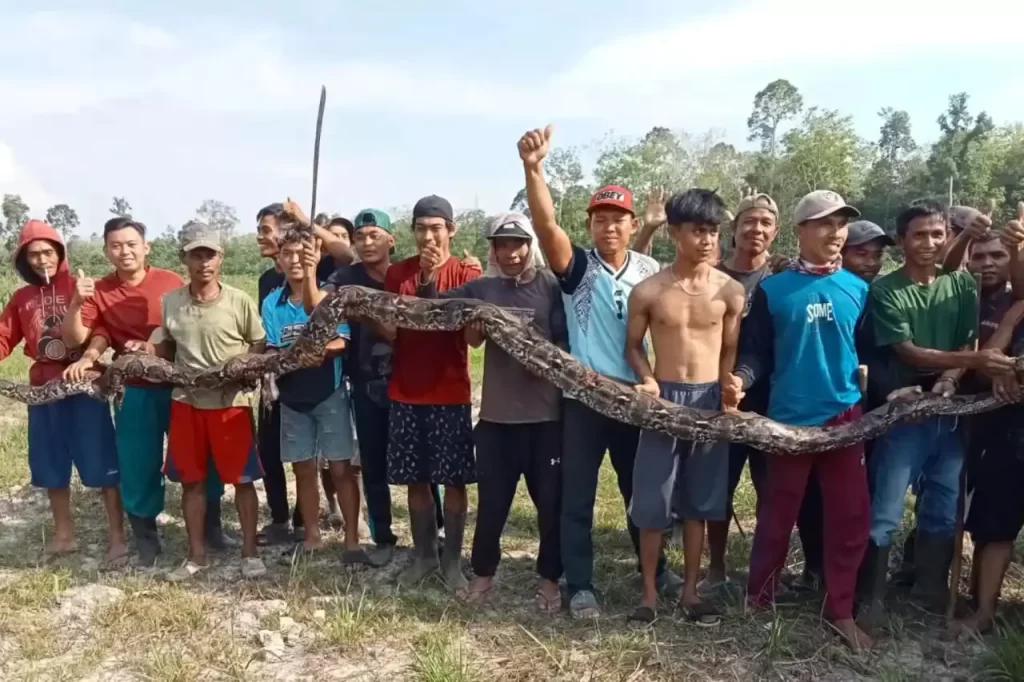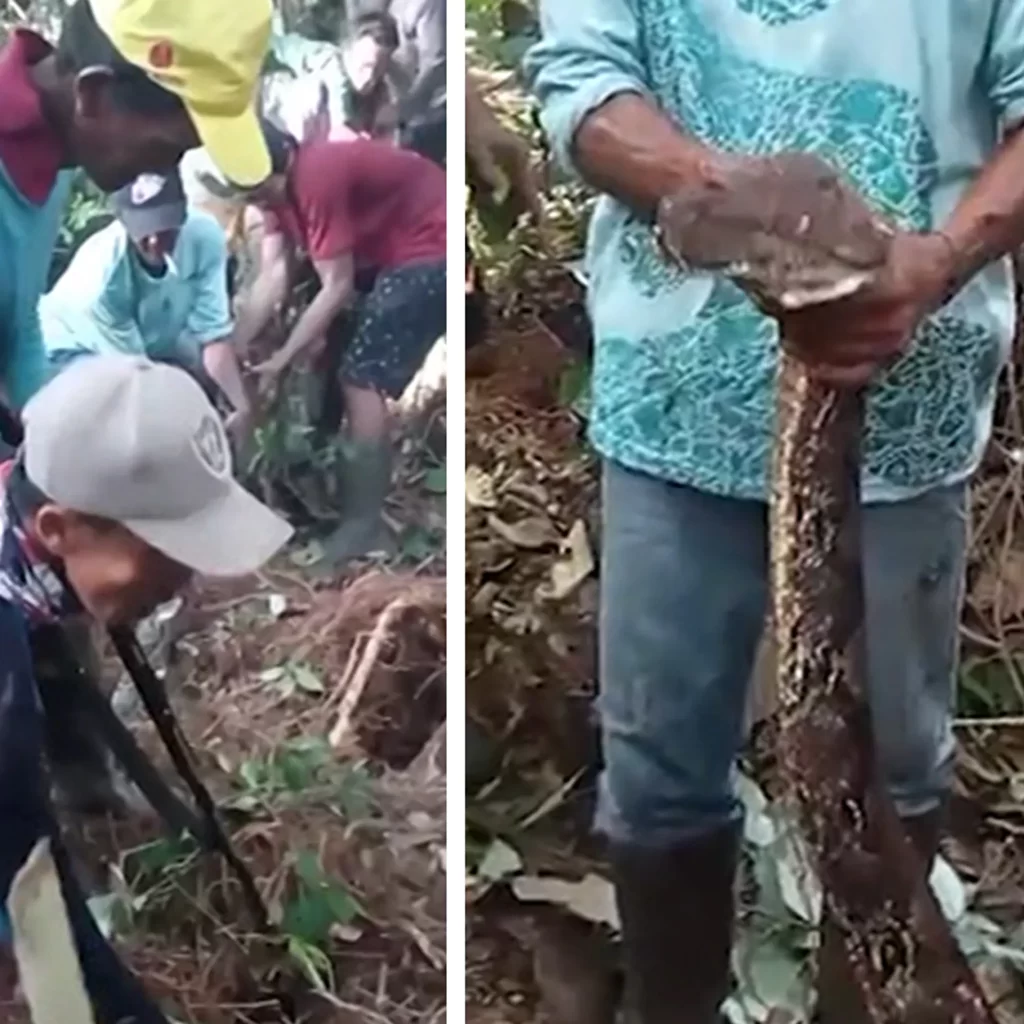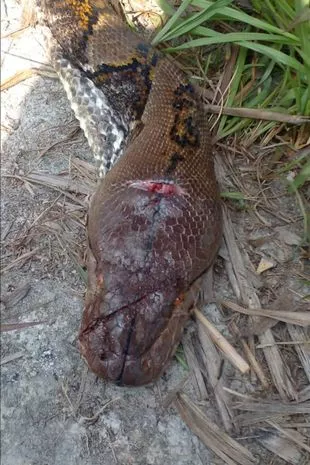A 57-year-old grandmother, identified as Hapsah, was killed by a 16-foot python while working on a rubber plantation in Indonesia’s Jambi province, local authorities reported on Monday. The incident occurred on August 27 in the Muaro Jambi Regency, underscoring the ongoing risks of human-wildlife encounters in the region.

Hapsah was tapping rubber trees when the massive serpent attacked, overpowering her and constricting her body. Sungai Gelam Police Chief Iptu Usaha Sitepu stated, “The python constricted the victim to death and was about to swallow her head-first when discovered.”
The victim’s husband, M Safri, 66, who also works on the plantation, became concerned when his wife failed to return home and went searching for her. He heard rustling in the undergrowth and made the horrifying discovery of the python coiled around Hapsah’s body.
“He knew she was already dead, so he could only pull at the snake’s tail and hit it until it loosened its grip,” Chief Sitepu explained. Safri then rushed to alert the local community for assistance.

Upon learning of the attack, enraged villagers hunted down the python, which had burrowed near a tree root. The snake was killed by the mob, with village head Amdi reporting, “It was massive. It was taken to the village to be shown to the community after it was killed.”
Amdi added that Hapsah was nearly fully engulfed by the snake when her husband found her. “Hapsah was almost swallowed entirely by the snake, with only half of her body left to engulf when her husband managed to free her,” he said.
This tragic incident follows a similar attack just days earlier in Palopo City, where another elderly woman, 74-year-old Maga, was killed by a python while tending to her cattle in a forested area.

The reticulated python, native to Southeast Asia, is the world’s longest snake species and is known to inhabit forests, swamps, and even urban areas. These pythons are capable of preying on humans and various animals, including cats, dogs, birds, and other snakes.
Wildlife experts emphasize that such attacks, while rare, highlight the need for increased awareness and preventive measures in areas where human settlements encroach on python habitats. Local authorities are urging residents to exercise caution when working in or near forested areas and to report any sightings of large snakes to wildlife officials.
As communities in Indonesia continue to expand into natural habitats, incidents of human-wildlife conflict may persist, prompting calls for better management strategies to protect both human lives and wildlife populations.



